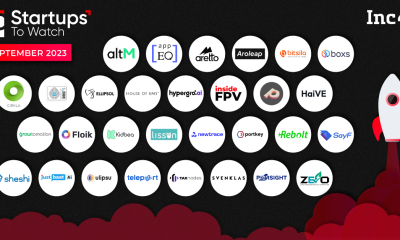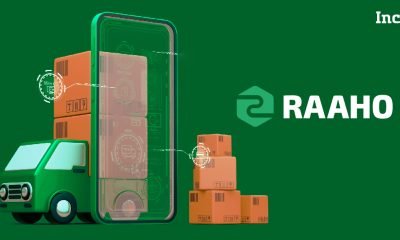E-commerce
Smart Practices Around Competitive Pricing In Ecommerce

Top pricing strategies for online retailers
“When it came to retail markets, law of one price is no law at all.”- Hal Varian
Hal Varian, in his seminal paper “A Model of Sales”, further remarks that most retail markets are instead characterized by a rather large degree of price dispersion.
Do you know how much your products are worth? How low are you willing to price an item to compete with another ecommerce retailer?
Today, online retail has become increasingly competitive. If you are priced higher than your competitors, you may end up losing customers who are sensitive to prices. With the advent of highly competitive pricing tools, winning the online pricing war is an uphill task. Having a differentiated competitive strategy is critical to your e-commerce success.
We bring to you a list of competitive pricing strategies that we have seen being played out across online retailers in 10 countries that we actively monitor and analyze.
Analyzing competitor prices and stock availability
Pricing is one of the largest driver of profitability. So you know who your main competitors are, but do you know how they are priced? Compare prices and stock availability of products that are popular across all your competitors and do the same for products that are popular at your store. If you know that certain products are “not in stock”, you know you need not discount. Look at products that are popular across competition and know your price position. Try for an opportunity to increase prices without losing your price position. However, for products popular on your store, you may want to stay competitive.
Knowing price variations
You get the right price, and then it’s not right anymore. That’s the story of online retail. But when you are equipped with the knowledge of price variations on popular marketplaces, it gives you an idea of where the market is heading. This, in turn, will help you adjust your prices to get the consumers. For instance, Amazon changed prices of more than 50% of their products in Hair Care category more than once in a week including ~20% of the products at least 4 times in the same week.
Product bundling
A marketer of a successful product may bundle a new or less successful product with its stronger product to edge its way into a new market. This allows you to charge a unique, competitive price that can’t be copied by others. If you realize that you may not be able to compete on direct discounts, bundle products together and offer them at a lower price. You can either bundle in multiples of the same product or pack different products together. One of the more famous examples of this is Microsoft’s bundling of various software applications. In the onsite retail space, for example, on a particular day we noticed ~400+ combo offers from Snapdeal in the camera & accessories category whereas Paytm has ~200+ combo offers and Amazon has ~3000+ combo offers in the same category. Similarly, in hair care category we observed significant variance in combo offers across marketplaces (~900+ by Amazon, ~250+ by Paytm and ~100 by Snapdeal on a specific day). We also noticed that marketplaces have varied number of products sold in packs across different brands (~2500 in Amazon, ~800+ in PayTM and ~500 in Snapdeal on a specific day).
Shipping fees & delivery time
Free shipping attracts customers to e-commerce platforms like a moth to a flame. Monitor shipping fees across competition for products you are interested in. There will be cases where your competitor is pricing a product at a lower price than you, but does not offer free shipping. That is your signal to promote your platform.
Price match guarantees
Price match is an easy way for customers to save money on their day-to-day purchases. During Black Friday sales in the US, a lot of popular stores go for the price match guarantee feature to drive sales. It’s a smart trick to let your customers show you the lowest price and then match them accordingly.
No discounts on unique products
No matter how much you dress it up, cutting prices hurts. It might be unavoidable, but you can get rid of discounts on unique products. When you analyze gaps and strengths of your catalog and realize that there are products that are available only on your store, why would you need to provide discounts? So, for instance, it seems that only Flipkart is carrying Icon LaserJet Pro Black Toner currently and it is being sold at 75% discount. Unless the objective is to get rid of the inventory, this product could be priced higher. Another example is, Nikon Coolpix S1100PJ Point & Shoot Camera is out of stock with most of the key marketplaces. Hence if anyone gets this replenished, this should not be discounted. Similarly, unique brands in hair care category, say LeModish, is sold primarily on PayTM. So, PayTM could look at reducing discount for this brand.
Don’t price above market rate
Some retailers price products above the market rate (MRP / MSRP) so that they can show substantial discounts. But your customers are smart and research well. If they realize that this is not really ‘low price’, you may end up losing them.
Dynamic pricing
This is one trend you should definitely follow. Constantly monitor competitor prices and drop or increase prices whenever you see an opportunity. This process is highly tech-driven, so ensure that you work with a vendor who provides the same or you have the in-house capability to do this in a sustained and scalable manner.
There are multiple strategies that have to be considered, including cross-border commerce and highly spread out markets like SEA where there exists a lot more C2C marketplaces. However, as with many things in ecommerce, one size does not fit all. Combine the powers of your service and price to drive your bottom line and emerge as an undisputed leader in the retail space.
E-commerce
Blinkit delivers Lenskart products in 10 mins.

In an announcement on Friday, Albinder Dhindsa, the founder of Blinkit, revealed that the quick commerce firm, owned by Zomato, will now offer delivery of eyewear products from Lenskart in under 10 minutes. This partnership allows Blinkit customers to access Lenskart.com products swiftly, initially focusing on sunglasses and Lenskart’s Hustlr range, which includes computer glasses. Dhindsa expressed curiosity about the evolution of the Hustlr brand over time.
The expansion of quick commerce services beyond groceries is evident as various categories such as beauty, toys, health, and electronics witness significant sales growth on such platforms. For instance, Arindam Paul, a founding member and CBO at Atomberg, recently shared on LinkedIn that the company has started selling its products on a quick commerce platform, maintaining the same prices as offered on other e-commerce platforms.
Additionally, Blinkit recently announced its availability of PlayStation 5 on its platform. Dhindsa noted that Blinkit customers in Delhi NCR, Mumbai, and Bengaluru can now have the all-new PlayStation 5 Slim editions and controllers delivered within 10 minutes. However, due to high demand, the product quickly went out of stock within a week of its launch. Dhindsa reassured customers on LinkedIn that the company is actively working on restocking PlayStation 5 units at its stores to meet demand.
E-commerce
Amazon collaborates with neighborhood stores to offer community New Year items.

In Kolkata, approximately 15,000 local shops spanning across Bengal have partnered with Amazon India to provide a diverse range of items essential for various community New Year celebrations. These items include fresh flowers, rangoli, and puja essentials necessary for rituals during festivities such as Poila Baisakh, Ugadi, Gudi Padwa, Bohag Bihu, and others.
Furthermore, not only shops specializing in traditional festival items, but also those selling home furnishings, kitchen appliances, personal care products, computers, and peripherals have joined Amazon for this occasion. The collaboration aims to cater to the diverse needs of customers during the New Year celebrations of different communities.
These local partner shops of the e-commerce giant are situated in prominent locations across Kolkata, Howrah, Durgapur, Nadia, Hooghly, and Kharagpur. Abhishek Jain, the head of local shops at Amazon India, assured that orders placed would be promptly delivered to customers.
The festivals such as Poila Baisakh, Ugadi, Gudi Padwa, Bohag Bihu, Maha Vishubha, and Sankranti are celebrated with great fervor in various regions. In Bengal, these New Year festivals are embraced by the respective communities residing in the state.
Jain further elaborated that this year, nearly 4,700 sellers are offering approximately 60,000 festival-themed products across India through Amazon’s platform. The company anticipates an increase in the number of sellers partnering with them, thereby enhancing the variety and accessibility of festival-related products for customers nationwide.
E-commerce
Indiamart shakes up management, names new CFO, CIO.

Indiamart, a prominent B2B e-commerce platform, has announced the appointment of Jitin Diwan as its new Chief Financial Officer (CFO), effective May 15, according to a regulatory filing on Monday. Diwan brings over 17 years of experience to his new role, having previously served as the Head of Finance (Vice President) at Upstox Securities and holding positions at companies like Amazon India, Bharti Airtel Limited, and Vodafone.
Diwan will succeed Prateek Chandra, the current CFO, who will transition into a new role within the company as Chief Strategy Officer starting June 15.
The filing also revealed Indiamart’s recent investments totaling Rs 1100 Cr in pursuing inorganic growth opportunities across B2B, Fintech, Logistics, and business SAAS sectors. It mentioned acquisitions of Busy Infotech and Livekeeping Technologies, along with multiple minority investments. To further nurture and grow these investee companies while exploring organic and inorganic growth opportunities, Indiamart has created the new role of Chief Strategy Officer.
Furthermore, Indiamart has appointed Nikhil S. Prabhakar as its Chief Information Officer. Prabhakar, with over 13 years of experience, brings expertise in business management, sales management, product management, and leadership. Before joining Indiamart, he was associated with companies like Pristyn Care, Ola Financial Services, and Bharti Airtel.
In addition to these appointments, Dinesh Chandra Agarwal has been re-appointed as the Managing Director and CEO for a term of 5 years, effective from January 8, 2025.
-

 Startup Stories1 year ago
Startup Stories1 year agoWhy Millennials, GenZs Are Riding The Investment Tech Wave In India
-

 Startup Stories1 year ago
Startup Stories1 year agoStartups That Caught Our Eyes In September 2023
-

 Startup Stories1 year ago
Startup Stories1 year agoHow Raaho Is Using Tech To Transform India’s Fragmented Commercial Trucking
-

 Startup Stories1 year ago
Startup Stories1 year agoMeet The 10 Indian Startup Gems In The Indian Jewellery Industry’s Crown
-

 Crptocurrency9 months ago
Crptocurrency9 months agoLither is Making Crypto Safe, Fun, and Profitable for Everyone!
-

 Startup Stories1 year ago
Startup Stories1 year agoHow Volt Money Is Unlocking The Value Of Mutual Funds With Secured Lending
-

 E-commerce1 year ago
E-commerce1 year agoTop Online Couponing Trends To Watch Out For In 2016
-

 Startup Stories1 year ago
Startup Stories1 year agoWhy Moscow-Based Kladana Considers Indian SME Sector As The Next Big Market For Cloud Computing




